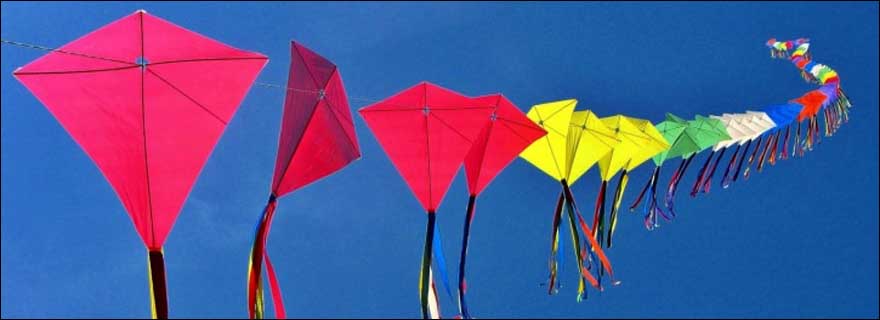Makar Sankranti 2024
The Day the Sun Enters Capricorn

Makar Sankranti – January 15, 2024
Makar Sankranti marks the entry of transiting Sun in the sign of Capricorn. As per Hindu mythology the planet Saturn is son of the Sun so the Sun’s transit in the sign of Saturn is considered auspicious.
The word Sankranti stands for transit of the Sun from one zodiac sign to the next. So in this way there are twelve Sankrantis in a year as the Sun moves through all the twelve signs in this period. But its entry in the sign of Capricorn or Makar carries special importance.
As per Hindu beliefs Saturn is the son of Sun. In Vedic astrology Sun and Saturn consider each other its enemy. But on Makar Sankranti as the father Sun enters the sign of Saturn or in other words it visits the house of its son Saturn then the enmity is forgotten and Saturn feels blessed due to its father’s visit.
Unlike most other Hindu festivals which occur as per lunar calendar Makar Sankranti is as per solar transit hence it falls on 14th January each year.
Makar Sankranti is also known as Vishuvat Sankranti. This occasion also celebrates the movement of the sun in the celestial northern hemisphere.
Makar-Sankranti is celebrated throughout India in different forms. In Punjab it is celebrated as ‘Lohri’, in Tamilnadu as Pongal and in Kerala as ‘Onam’.
This movement is considered auspicious. Therefore a period starting with Makar Sankranti is not only auspicious for all ceremonies, but it is also considered progressive for all material attainments.
Millions of devotees in India take dip in rivers and worship Sun to mark Makar Sankranti.There is a common belief that on this holy day if father visits his son’s house, then it is lucky for the son and gives pleasure to both.
On this day married women pray to Sun God for long life of their husbands and also by giving gifts to elders in the family take their blessings.
Children as well as grownups fly kites right from early morning till late in the evening on this day.
Makar Sankranti is celebrated as Pongal in South India and as Maghi in North India.
The significance of Makar Sankranti is greater in Maharashtra. People exchange greetings and visit temples.
Laddoos (sweet balls) made of gur (jaggery) and til (sesame seeds) is the main sweet for this occasion.
Makar Sankranti, is a harvest festival and is also regarded as per Hindu culture the beginning of an auspicious phase.
Progressive Way to Celebrate MakarSankranti …
Superstitious and mythological beliefs have their own place and may be helpful in reaching truth through a lengthy path. But certain time tested and progressive ways such as Pranayama, Introspection and Meditation act as a super highway to reach the truth or ultimate spiritual goal in a short time.
In addition to following the age-old rituals like taking a dip in holy waters etc. you must do an hour of deep meditation as described below, on this auspicious occasion.
How to Meditate on Makar Sankranti …
From 12:30 PM to 1:30 PM, sit calmly in a secluded place. You may sit comfortably on a chair with feet resting on a cushion on the floor or sit in lotus posture on a cushion on the floor as suits your body and age, keep your spine erect.
• Take a few deep and smooth breaths and exhale fully.
• Close your eyes and keep your inner gaze at a point between your eyebrows.
• Visualize that dark clouds are going away and the sky is becoming clear and mild rays of a bright Sun are reaching the earth. Visualize that everybody is happy and rejoicing as their dreams are fulfilled. Especially think of those with whom you have any differences and visualize that they are also happy and rejoicing.
• Imagine that all your problems and difficulties are melting away and your life is becoming happy and contented.
• Now just sit and not let any thought enter your mind. Just watch your breath. Imagine that you are sitting at a high place and only watching your breath. Do not attempt to control your breath, only watch it.
• End this meditation by reciting a few times the Gayatri Mantra:
“Om bhurbhva Sva tats vitur varenium,
Bhargo devasya dheemahi,
Dhio yona prachodiaat”
Article by: Jyotirvid Pawan Kumar
Latest Articles
- How Each Zodiac Sign Manages Money: Traits, Habits, and Planetary Influence
- Zodiac Signs and Money Management
- Transit of Mercury into Leo on 27 June 2025
- Transit of Mercury into Cancer – Effects and Remedies
- Sun Transit in Gemini 2025 – Effects on All Zodiac Signs
- Jupiter is combust in the Gemini sign (9th June, 2025)
- Mercury’s transit in Gemini (6th June, 2025)
- Transit of Venus in Aries (31 May, 2025)
© 2025 by Truthstar Future Vision Pvt Ltd All Right Reserved



